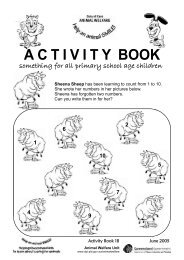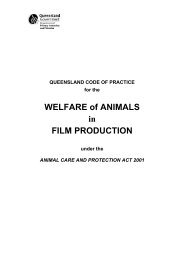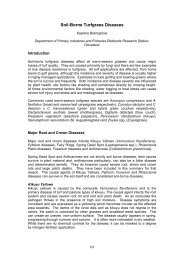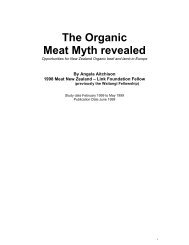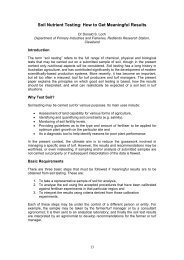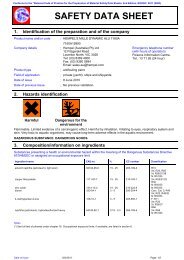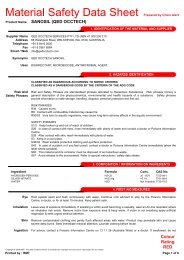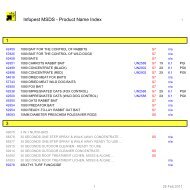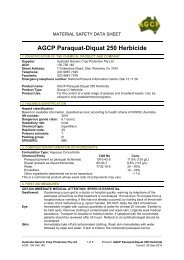Guidelines For Rural Beekeeping In Queensland
Guidelines For Rural Beekeeping In Queensland
Guidelines For Rural Beekeeping In Queensland
You also want an ePaper? Increase the reach of your titles
YUMPU automatically turns print PDFs into web optimized ePapers that Google loves.
The beekeeper should not expose cappings, sticky combs or honeycombs for bees to rob. Cease hive<br />
manipulation if robbing commences.<br />
Hazards include:<br />
• increased spread of disease, e.g. American Foulbrood Disease (AFB) spread between hives and even<br />
between apiaries<br />
• unsafe working conditions for the apiarist<br />
• unsafe areas for property owners and stock<br />
• possible killing of one or many hives by fighting workers.<br />
Bees working coastal flora, Stradbroke Island<br />
Managing swarms<br />
Swarming is a natural instinct of honeybees and occurs mainly in spring to early summer.<br />
Whenever possible, swarms should be collected and domesticated in a spare hive. This will reduce<br />
the risk of them becoming a nuisance if they fly to nearby properties and establish in houses, trees<br />
or similar sites.<br />
Honeybee colonies must be managed to prevent or minimise swarming. Suitable management<br />
practices are described in books such as the DPI&F publication by P. Warhurst and R. Goebel, (1995),<br />
The Bee Book — beekeeping in the warmer areas of Australia.<br />
To reduce the incidence of swarms, beekeepers are advised to divide the colony of honeybees into<br />
two or more units as the swarming season approaches. This will reduce the population and the<br />
likelihood of swarming. The reuniting of these units can take place later in order to reduce the<br />
number of hives. This procedure is known as artificial swarming and the practice is effective in<br />
removing the swarming impulse.<br />
23



